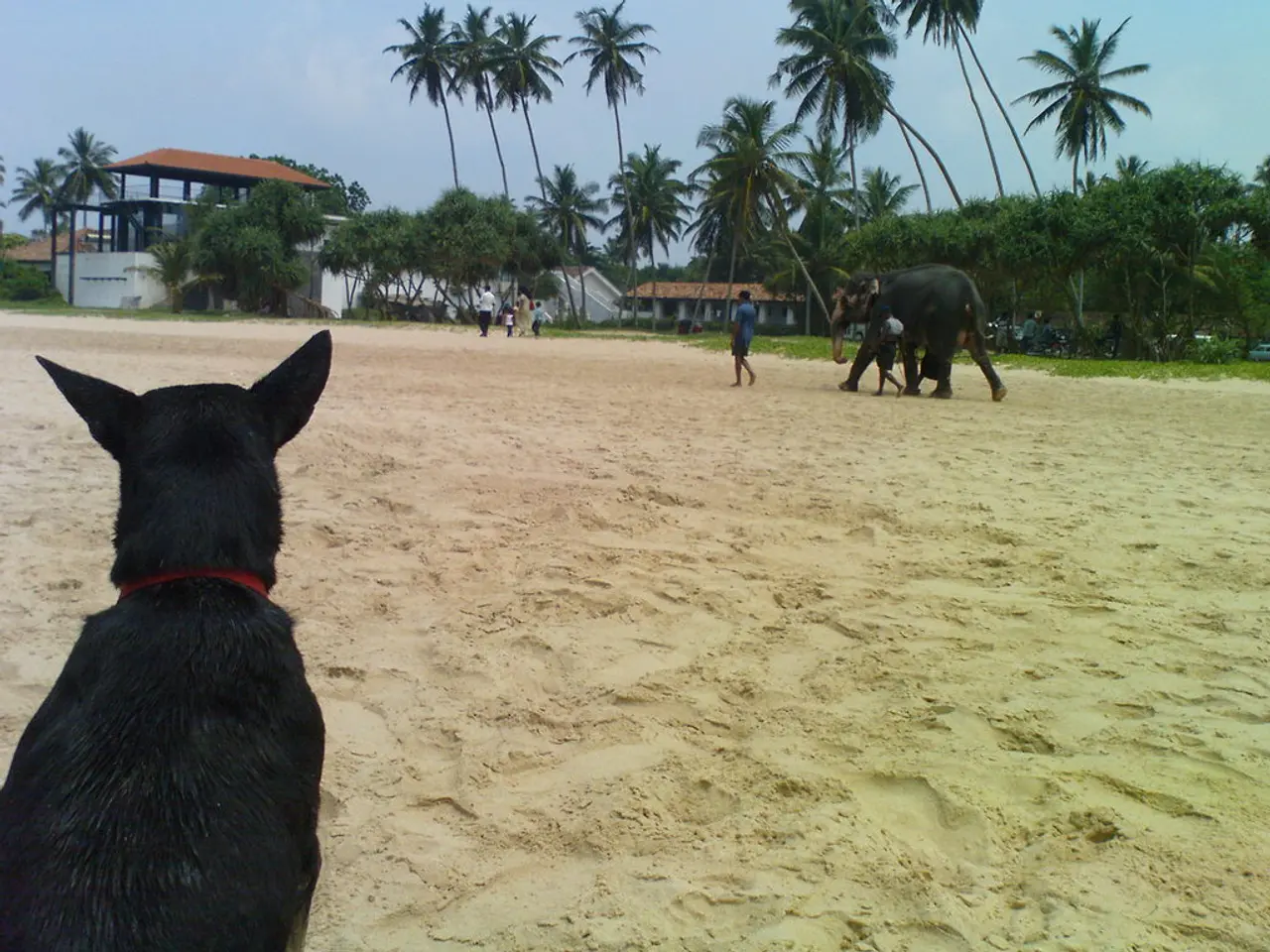Desert elephants, critically endangered, receive protection via satellite technology - a breakdown of the process.
In the arid plains of Namibia, a country home to approximately 24,000 elephants, a unique conservation project is underway. The aim is to help desert elephants coexist with human settlements, particularly in the western Kunene region, where smaller groups of these resilient creatures inhabit.
Before the Namibian war of independence, locals lived in harmony with elephants. However, poaching decimated the desert elephant population, causing a rift in their coexistence. Today, these majestic creatures remember the tragedies inflicted by humans and only approach villages at night, moving almost like ghosts, and running away at the first hint of human presence.
To address this issue, researchers are using GPS data and high-resolution satellite images from Airbus’ Pleiades Neo satellites. The satellite images help identify elephant hotspots, enabling researchers to negotiate with farmers for a safer coexistence. One farmer, after seeing the satellite data, allowed researchers to have a corner of his farm in exchange for protecting the rest of his farm, demonstrating a potential compromise for reducing conflict.
The geofencing system has led to a decrease in incidents involving humans, according to Winter. Researchers are collecting data during the droughts and the subsequent rainy season to understand how the elephants' movement patterns change throughout the year. This information allows conservationists to send alerts to local farmers and communities to reduce dangerous encounters and to plan interventions that protect both elephants and people.
An essential part of the project is the "Earth Ranger" system, which generates an alert when an elephant approaches a village or farm, sharing the information with the community in real time. By understanding elephant movement patterns during extreme droughts or rains, conservationists can work with farmers on strategies to protect infrastructure and crops without resorting to violence against elephants.
The researchers are also trying to design new strategies to make human-elephant coexistence easier by protecting natural water points, placing troughs and dams strategically. The aim is to identify corridors and find ways to protect the habitat for the desert elephants, ensuring their survival and the continuation of their unique relationship with the Namibian landscape.
These efforts are part of projects such as the Elephant-Human Relations Aid (EHRA) and aim to safeguard the remaining desert elephant population, estimated at around 150 animals today. Community participation and volunteers working alongside conservationists are key to maintaining a peaceful environment for both elephants and humans.
Thus, the strategy revolves around combining satellite remote sensing, GPS tracking, data integration platforms, community engagement, and tailored intervention measures to mitigate human-elephant conflicts and support conservation in Namibia’s desert environment.
- The unique conservation project in Namibia utilizes technology like satellite images from Airbus’ Pleiades Neo satellites to identify elephant hotspots and facilitate safer coexistence between elephants and human settlements.
- The researchers involved in the conservation project are using environmental-science data during droughts and rainy seasons to understand how elephant movement patterns change throughout the year.
- The "Earth Ranger" system, a part of the project, generates real-time alerts when an elephant approaches a village or farm, helping to reduce dangerous encounters and plan interventions that protect both elephants and people.
- The strategy for coexistence also includes science-based initiatives such as protecting natural water points, placing troughs and dams strategically, and identifying corridors to safeguard the habitat for desert elephants.




